
 Department of Conservation and Recreation
Department of Conservation and Recreation
Conserve. Protect. Enjoy.
 Department of Conservation and Recreation
Department of Conservation and Recreation
By Guest AuthorPosted February 27, 2024
.jpg) Invasive species are non-native plants, animals or pathogens that are causing environmental harm, economic losses or harm to humans.
Invasive species are non-native plants, animals or pathogens that are causing environmental harm, economic losses or harm to humans.
It’s important to remember that these species do play an important and beneficial role in their natural ecosystems. It takes diligence from everyone to protect all species by keeping them in their native environments.
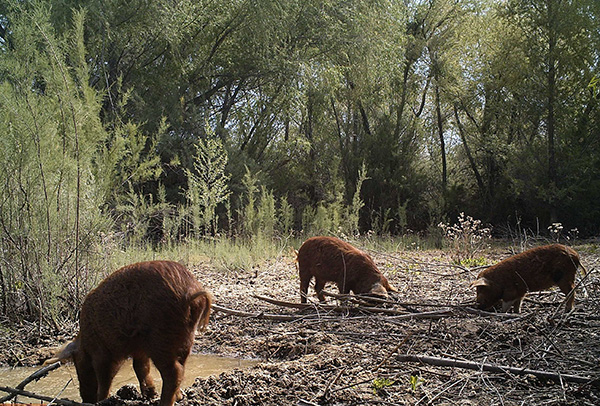
Feral swine aka feral hogs, wild pigs, wild hogs, wild boars, Russian boars (Sus scrofa), were once domestic pigs that escaped into the wild, originated in Europe and were brought to the United State by settlers for food.
These wild animals now damage crops, uproot trees and harm wetland habitats through wallowing.
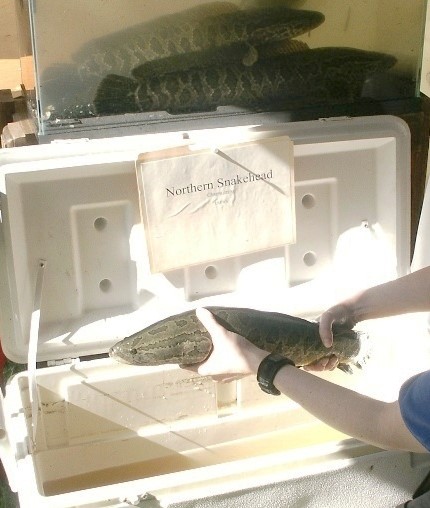
Northern snakehead fish (Channa argus), originally from China, Russia and Korea, are resilient.
Likely introduced to the U.S. by fishermen and exotic aquarium owners, the snakehead fiercely guards its nest, laying up to 75,000 eggs per year.
It doesn’t have any known predators in Virginia, except for the occasional large bird.
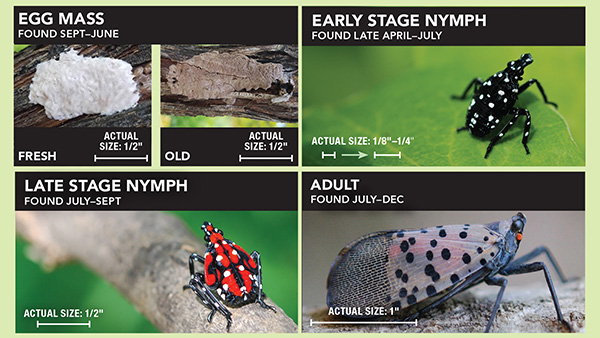 Photo courtesy of the Virginia Department of Agricultural Services
Photo courtesy of the Virginia Department of Agricultural Services
A vibrant plant-hopper from China and Vietnam, spotted lanternfly (Lycorma delicatula) is an important pollinator in its home where wasps keep its numbers in check.
But in Virginia, the lanternfly doesn't have predators, causing its population to increase and become a threat to crops and native trees.
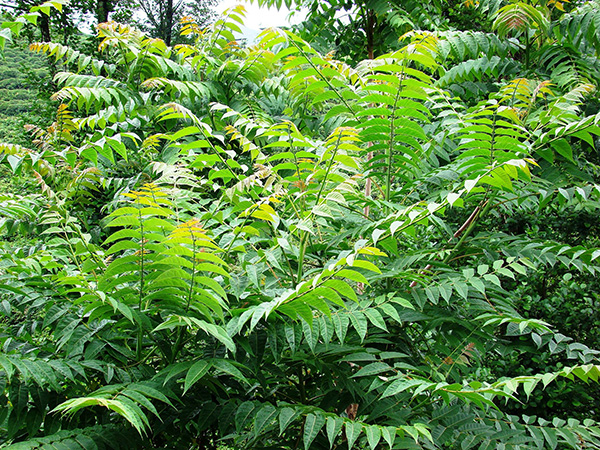 Photo courtesy of NatureServe
Photo courtesy of NatureServe
Tree-of-heaven (Ailanthus altissima), a deciduous tree brought to the U.S. for decoration, grows up to 80 feet tall. It spreads seeds by wind, grows quickly and releases chemicals that limit the growth of other plants.
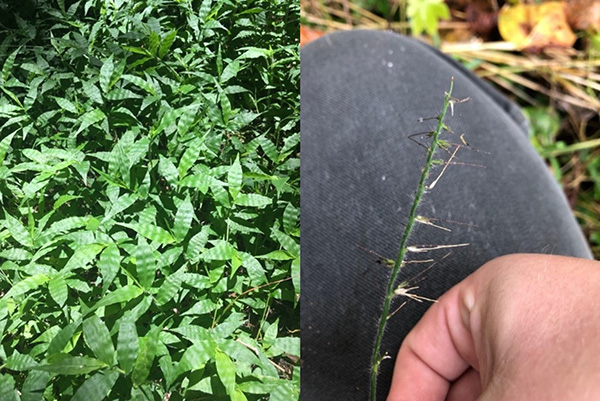 Photo: Madeleine Kern, Virginia State Parks
Photo: Madeleine Kern, Virginia State Parks
Wavyleaf grass (Oplismenus undulatifolius) spreads by hitchhiking on animals and hikers.
It's important to remove it before seeds form because the dense growth hinders seedlings and shrubs in the forest understory.
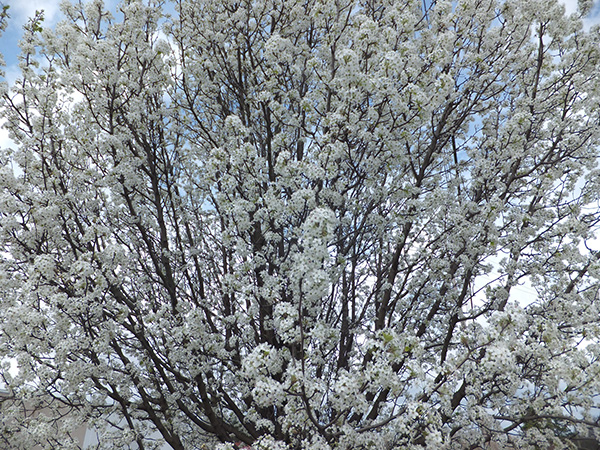
Bradford pear trees aka Callery pear or ornamental pear (Pyrus calleryana), with their perfect pear shape, are often planted in yards for their beautiful flowers and rapid growth.
Unfortunately, they easily spread seeds and can take over areas, hindering the growth of native trees.
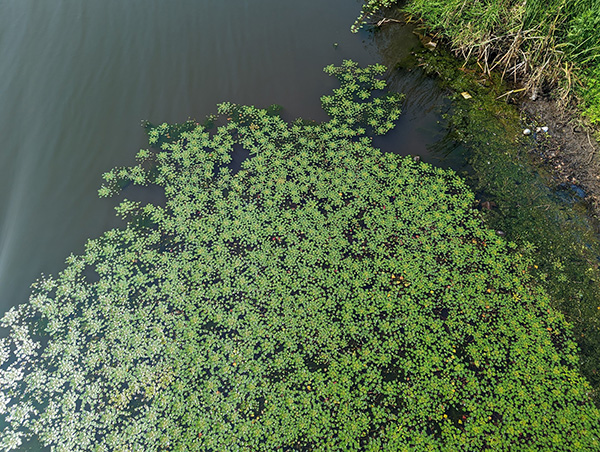 Photo: Kevin Heffernan, DCR
Photo: Kevin Heffernan, DCR
Two-horned trapa (Trapa bispinosa), from Japan and East Asia, quickly spreads, covering ponds, blocking sunlight and harming other species. It has economic and ecological impacts, lowering property values.
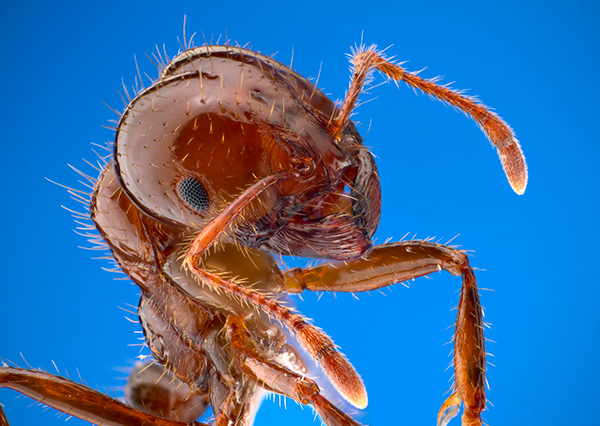
The imported fire ant (there are black (Solenopsis richteri) and red (Solenopsis invicta) species), from South America, came to the U.S. in the 1930s. It's a threat, harming crops and hurting small animals with its painful sting.
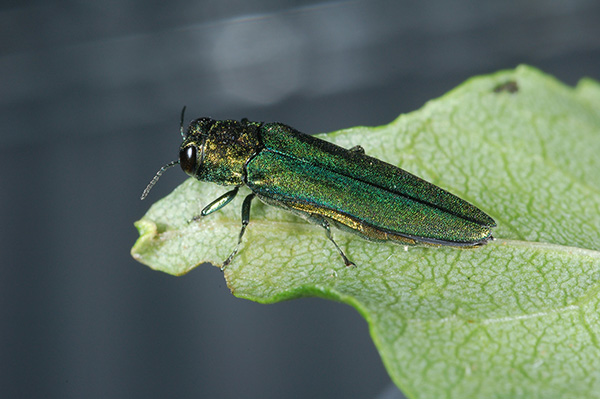
The emerald ash borer (Agrilus planipennis) is a metallic-green, wood-boring beetle that threatens Virginia native ash trees, which have no natural defenses against it.
You can prevent the spread of these and other tree-killing pests by choosing to buy firewood near where you’ll burn it – don’t move firewood.
Environmental Education Specialists Cassiopeia Camara and Lori Schoenwiesner contributed to this post.
Categories
Natural Heritage | Nature
Tags
invasive plants

